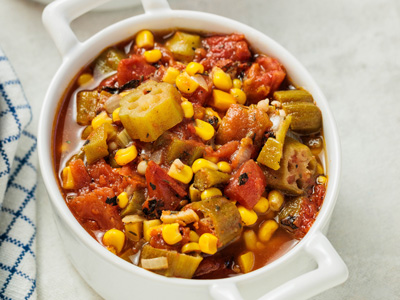
by Tomato Wellness | Sep 7, 2022 | Cookbook
Prep Time
40 minutes
Total Time
40 minutes
Ingredients
-
1 teaspoon olive oil
-
½ medium yellow onion, chopped
-
1 garlic cloves, chopped
-
1 yellow bell pepper, chopped
-
1 (12-ounce) bag frozen okra, thawed
-
2 (14.5 ounce) can fire roasted diced tomatoes, with juice
-
1 (15-ounce) can of sweet corn, rinsed and drained
-
2 teaspoons garlic powder
-
2 teaspoons thyme
Instructions
1. Heat olive oil in a large pot on medium-high heat.
2. Add onion and garlic, and cook until onions are transparent in appearance, about 3 minutes.
3. Add chopped bell pepper, and cook until soft, about 5 minutes.
4. Add okra, fire roasted diced tomatoes, corn, garlic powder and thyme. Stir well.
5. Cover the pot, and simmer over medium-low heat for 25 minutes.
Notes
This dish pairs well with brown rice or cornbread.
Nutrition Information:
Yield:
8
Serving Size:
1 cup
Amount Per Serving:
Calories: 66Total Fat: 1gSaturated Fat: 0gCholesterol: 0mgSodium: 353mgCarbohydrates: 13gFiber: 3gSugar: 3gProtein: 2g
Recipe by Jasmine Westbrooks, Registered Dietitian and Certified Diabetes Educator residing in Raleigh, North Carolina.
Print recipe PDF
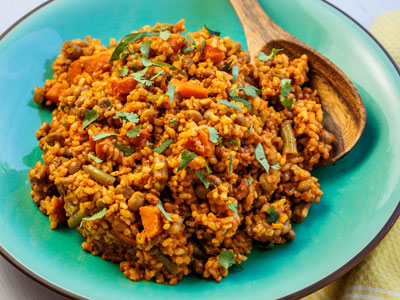
by Tomato Wellness | Sep 7, 2022 | Cookbook
Prep Time
45 minutes
Total Time
45 minutes
Ingredients
-
1 tablespoon vegetable oil
-
½ - 1 cup sofrito sauce (prepared or homemade*)
-
1 (8-ounce) can tomato sauce
-
¼ cup tomato paste
-
1 (15-ounce) can green pigeon peas (gandules), rinsed and drained
-
1 cup carrots (fresh, frozen or canned), diced
-
½ cup green beans (fresh, frozen or canned), chopped
-
1 quart reduced sodium vegetable broth
-
2 teaspoons adobo all-purpose seasoning
-
1 ½ cups short grain brown rice, uncooked
-
Cilantro sprigs to garnish (optional)
Instructions
1. In a large pot, heat oil over medium heat. Add sofrito sauce,* tomato sauce, tomato paste, pigeon peas, carrots, and green beans. Cook, uncovered, about 5 minutes, until vegetables are tender but firm.
2. Add broth, adobo seasoning, and rice. Cover and bring to a boil, then reduce heat to low. Cook for about 25 minutes, until most of the water is absorbed and the rice is tender.
3. Remove rice from heat, covered, and let stand for 5-10 minutes. Garnish with cilantro sprigs, if desired.
Notes
You may substitute other beans, like red kidney beans for pigeon peas. Jarred sofrito sauce is also available. *You can buy prepared sofrito sauce in a jar, or make your own by blending 3 garlic cloves, ¼ large white onion, 1 large green bell pepper, 1 small yellow or red bell pepper, ½ cup fresh cilantro, and 1 tablespoon vegetable oil.
Nutrition Information:
Yield:
8
Serving Size:
1 cup
Amount Per Serving:
Calories: 241Total Fat: 3gSaturated Fat: 0gCholesterol: 0mgSodium: 228mgCarbohydrates: 46gFiber: 3gSugar: 4gProtein: 10g
Recipe by Sylvia Klinger, an award-winning author, entrepreneur and founder of Hispanic Food Communications. She loves nutrition, developing delicious healthy recipes, traveling, nature, and spending time with her family.
Print recipe PDF

by Tomato Wellness | Sep 7, 2022 | Cookbook
Prep Time
30 minutes
Total Time
30 minutes
Ingredients
-
1 ½ teaspoons olive oil
-
3 cloves garlic, minced
-
1 medium yellow onion, diced
-
1 green bell pepper, diced
-
1 (14.5-ounce) can diced tomatoes, with juice
-
3 tablespoons tomato paste
-
¼ cup lemon juice
-
1 tablespoon dried oregano
-
Pinch salt
-
Pinch black pepper
-
1 pound white fish, cut into 4 (4-ounce) fillets (such as tilapia, cod, whitefish, rockfish)
-
3 tablespoons parsley, chopped (or 1 tablespoon dried)
Garnishes (Optional):
-
Red chili flakes
-
Hot sauce
-
Lemon juice
Instructions
1. Preheat the oven to 400° F.
2. In a medium sauce pan over medium heat, heat the olive oil.
3. Add the garlic, and cook for 1 minute.
4. Add the onion and bell pepper, and cook for 3 minutes stirring slightly.
5. Add the diced tomatoes, tomato paste, lemon juice, oregano, salt, and black pepper. Stir and cook for 3 minutes.
6. Remove from the heat. In a 3-quart rectangular baking dish, add half of the sauce. Arrange the fish fillets over the sauce. Pour the remainder of the sauce over the 4 fish fillets.
7. Place the dish, uncovered, in the oven, and bake for 20 minutes.
8. Remove the dish from the oven, and top with the chopped parsley.
Notes
If desired, add red chili flakes or hot sauce for extra spice.
Nutrition Information:
Yield:
4
Serving Size:
1 4-ounce fish fillet + ½ cup vegetables
Amount Per Serving:
Calories: 228Total Fat: 5gSaturated Fat: 1gCholesterol: 65mgSodium: 356mgCarbohydrates: 16gFiber: 4gSugar: 8gProtein: 33g
Recipe by Sarah Koszyk, MA, RDN, Registered Dietitian and Sports Nutritionist, specializing in complete wellness from within using real food for real people.
Print recipe PDF

by Tomato Wellness | Sep 7, 2022 | Cookbook
Prep Time
20 minutes
Total Time
20 minutes
Ingredients
-
8 small (4 ½-inch) corn tortillas
-
2 teaspoons vegetable oil
-
8 large eggs
-
½ cup canned refried beans
-
2 cups red tomato salsa
-
½ cup crumbled cotija cheese (or feta)
-
-
Toppings (optional):
-
Chopped fresh cilantro
-
Chopped avocado
-
Chopped jalapeño
Instructions
1. Heat a large skillet to medium heat, add tortillas in single layer and cook until warm and slightly toasted on each side (about 2 minutes). Remove and cover to keep warm.
2. Heat oil in the large skillet. Crack each egg into the skillet carefully, without breaking yolks. Fry eggs until the whites are set and the yolk is cooked.
3. Heat refried beans and salsa on the stovetop or microwave and cover to keep warm.
4. To serve, spread 1 tablespoon of beans on each tortilla, top with one cooked egg, ½ cup of tomato salsa, and top with 1 tablespoon cojita cheese (or feta). May sprinkle with additional optional toppings as desired, such as chopped fresh cilantro, avocado or jalapeño.
Nutrition Information:
Yield:
4
Serving Size:
2 tortillas with 2 eggs each
Amount Per Serving:
Calories: 368Total Fat: 15gSaturated Fat: 4gCholesterol: 382mgSodium: 633mgCarbohydrates: 35gFiber: 5gSugar: 7gProtein: 18g
Recipe by Karina Knight, MBA, MS, RD, a Mexican-American dietitian based in Sacramento, California.
Print recipe PDF
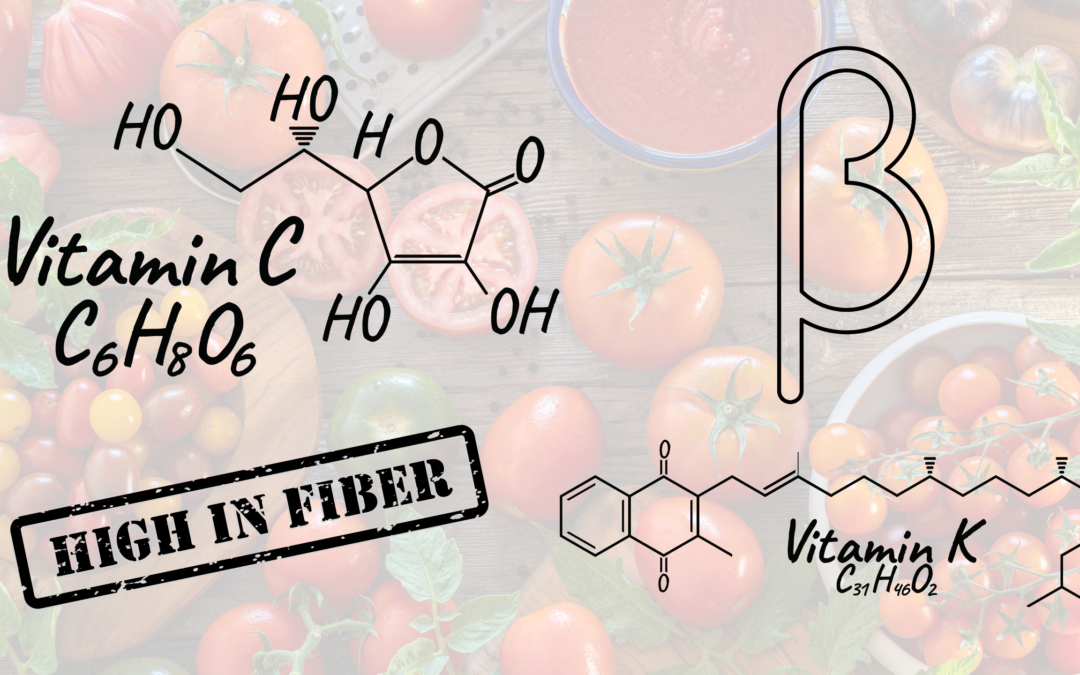
by Tomato Wellness | Aug 20, 2022 | Food and Nutrition, Tomato Products
Tomatoes are a superfood that contain several vitamins and nutrients that promote health. Here are 5 key nutrients present in canned tomatoes that pack a powerful nutrition punch.
When you think of the word superfood what comes to mind? Is it a tomato? Tomatoes are such a commonly eaten food filled with so much nutritional power, yet you may not think of them as a superfood. Not only are tomatoes packed with flavor, but they are also filled with important nutrients that are vital for overall health. Let’s unpack what science has to say about some of these key nutrients.
- Lycopene. Lycopene belongs to a class of compounds called carotenoids, and are powerful antioxidants that promote skin health, protect against certain cancers, and decrease the risk of heart disease and diabetes. Tomatoes are an excellent source of lycopene, but heat during the cooking process makes the lycopene even more bioavailable to our bodies, which makes canned and cooked tomato products an excellent choice.
- Beta-carotene. This is a phytochemical that is converted to retinol in the body which then becomes vitamin A. Vitamin A is important for supporting eye health and protects against cataracts and macular degeneration.
- Vitamin C. Also known as ascorbic acid, vitamin C is an antioxidant that can prevent oxidative stress. Additionally, it increases non-heme iron absorption from plant sources, while also preventing the iron inhibiting effects of calcium.
- Vitamin K. This is a fat soluble vitamin that is important for protein production. These proteins are necessary for the formation of blood clots, and the prevention of bone loss. Vitamin K has also been shown to protect against heart disease.
- Fiber. This nutrient has so many benefits, yet many people don’t get enough in their diets. Most know that fiber can promote bowel health and encourage regular bowel movements. However, it also can lower cholesterol levels, control blood glucose levels, and help maintain a healthy weight.
Tomato products should be a staple in every kitchen pantry. Not only are they quick and convenient, they contain many nutrients that promote health! The heating process that all tomatoes go through for preparation actually helps break down the cell walls and make the nutrients easier to absorb. For example, when cooked tomatoes deliver 2-3X more lycopene than a raw tomato! So, what are you waiting for? The next time you’re at the store go ahead and grab a can (or three) of some canned tomato products to use in the kitchen this week.
Need some recipe inspiration? Try out some of our favorites:
Shakshuka Pita Pizzas
Curried Veggie Rice Bowl
Swiss Chard Pecan Lasagna



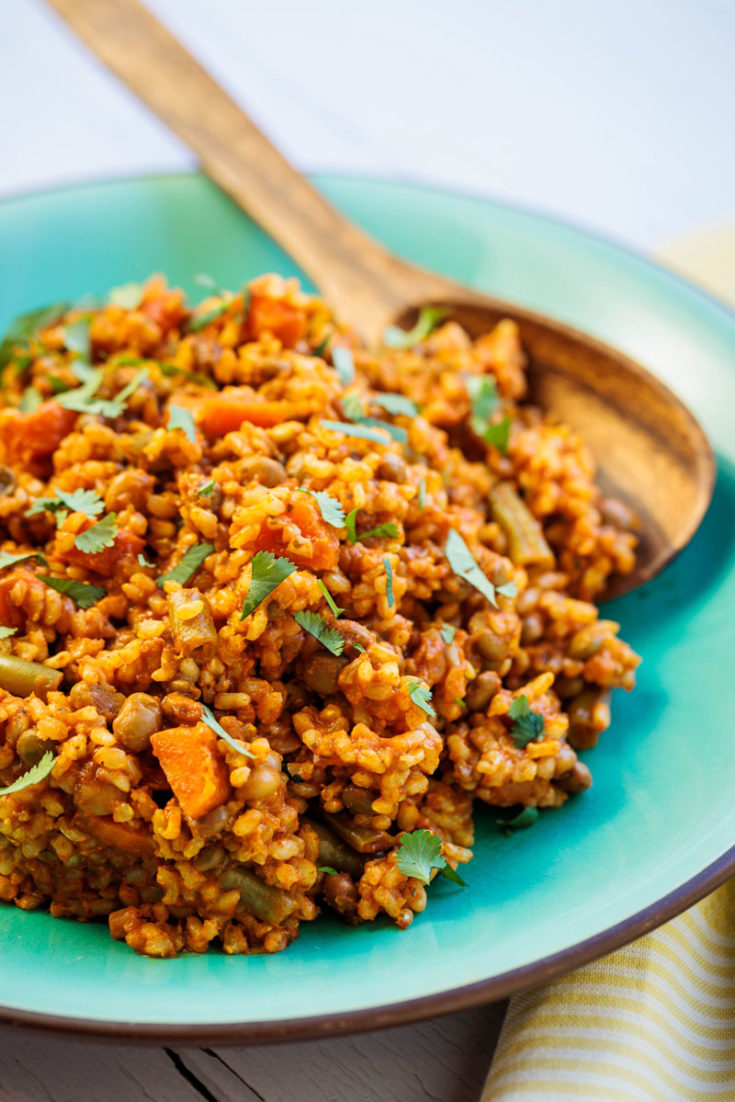

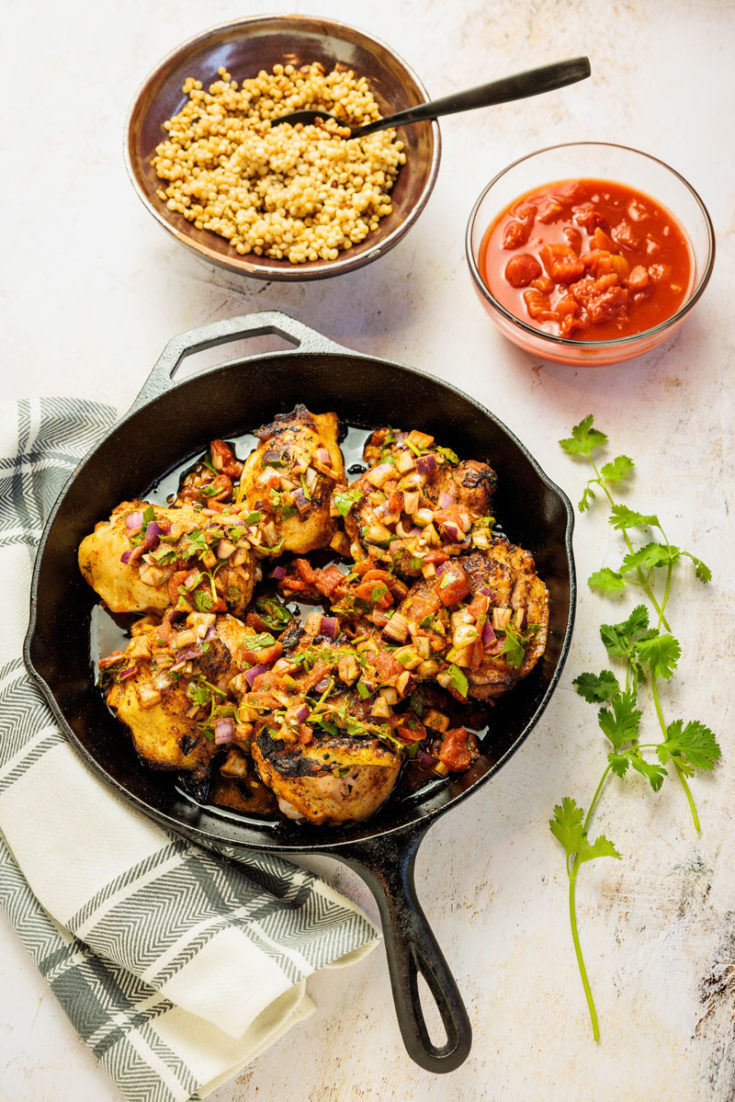

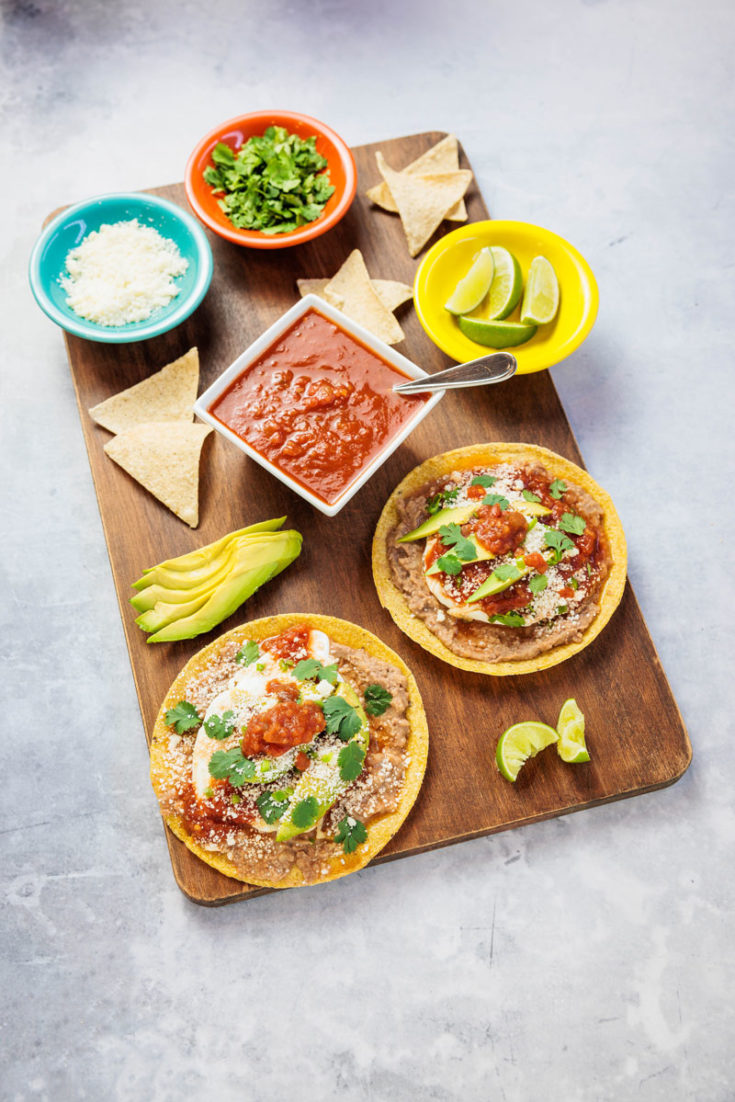

Recent Comments